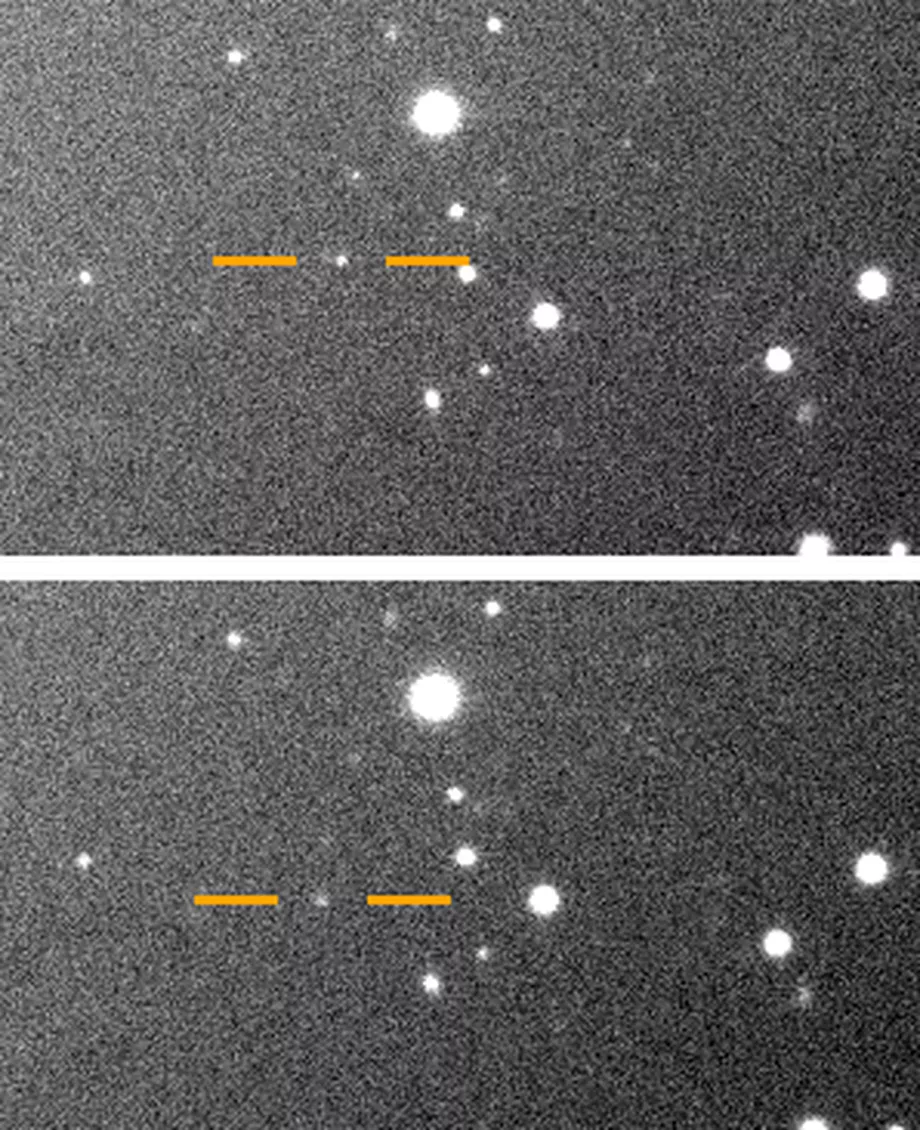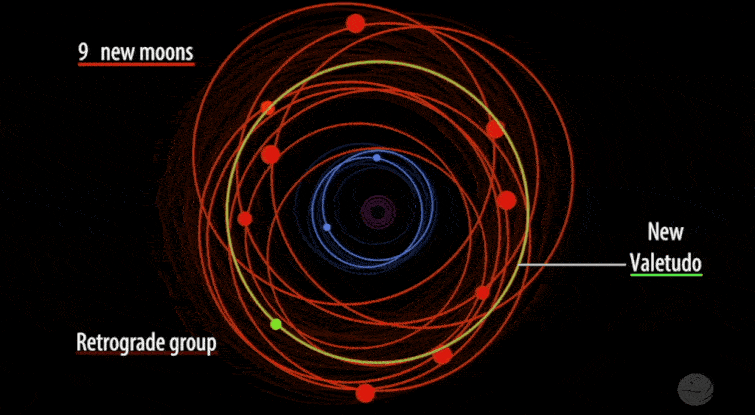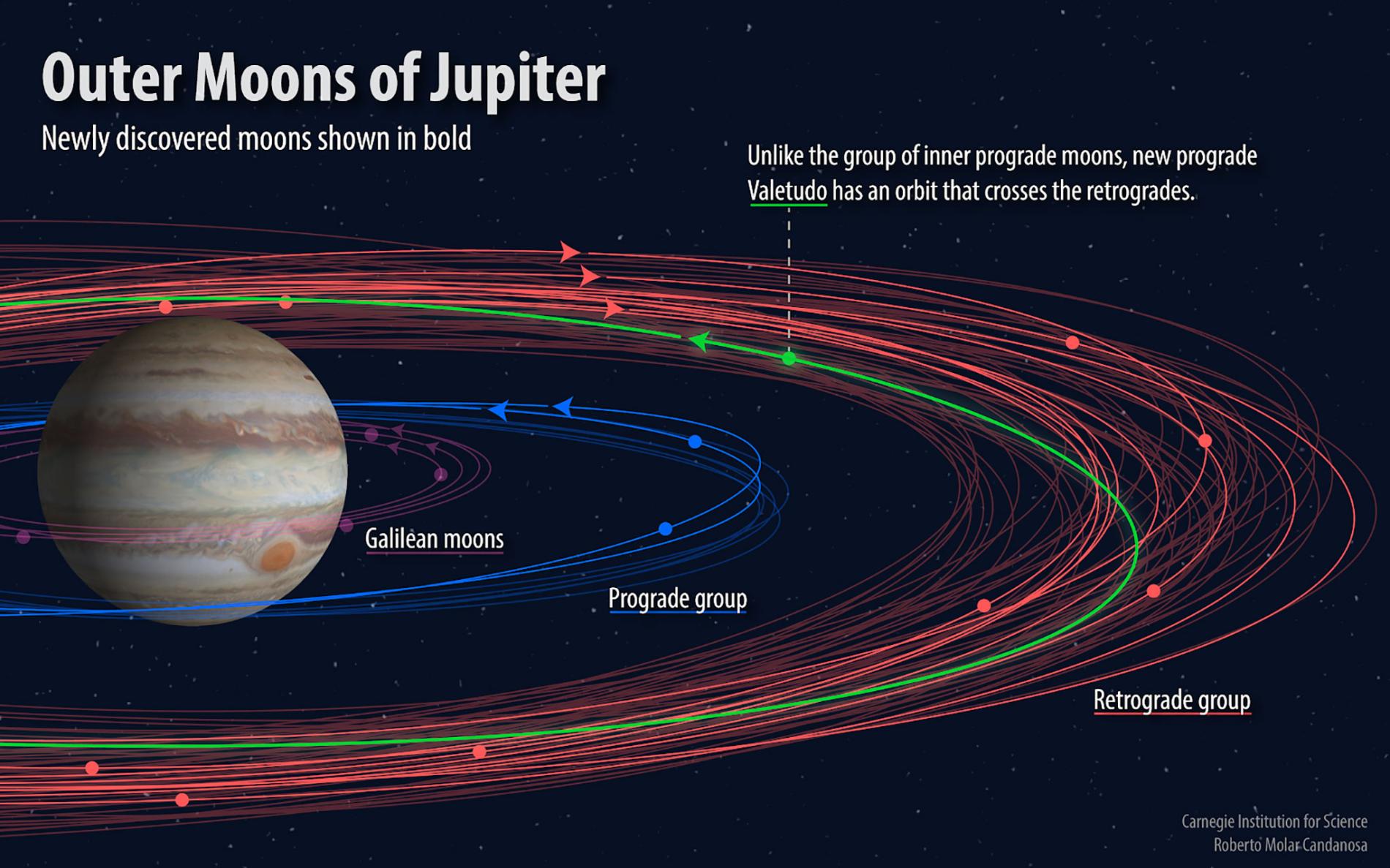
Several previously unknown moons have been found around the planet Jupiter. One of them behaves very oddly.
American astronomers from the Carnegie Institution for Science report that they found twelve new moons, although two of them were first presented last year. One of the moons that makes the discovery especially interesting.
The fact that Jupiter’s moons can orbit either one way or another around the planet is known in the past. So that the odd moon goes in the opposite direction to several of the other moons is nothing strange. But the strange thing is that it crosses through several of the paths of the other moons in a very unstable orbit.
The tiny ‘oddball’ moon has a name suggested, Valetudo, it is the only one of the dozen to have earned a publicly proposed name. Following astronomy naming conventions, the suggested moniker for this moon comes from mythology—the Roman goddess of health and hygiene.

All the newly identified moons are relatively small, ranging in size from about six-tenths of 1km to 4km. This is in contrast to other Jupiter moons such as Ganymede – the biggest in the solar system with a diameter of 5,268km. Jupiter, the fifth planet from the Sun, has a diameter of 142,984km.
The team, led by astronomer Scott S. Sheppard of the Carnegie Institution for Science, was actually using ground-based telescopes to look for evidence of the mysterious Planet Nine, a proposed outer Solar System body.
Since Jupiter’s gravity is so strong, it can keep objects in orbit up to 30 million kilometers away. In comparison to our moon that is just 363,104 kilometers away. This means there is a lot of space around Jupiter for astronomers to examine that could possibly contain moons.
“Jupiter just happened to be in the sky near the search fields where we were looking for extremely distant Solar System objects,”
“We had to observe the new candidate Jupiter moons again a month later and again a year later to confirm they were actually orbiting Jupiter and thus were moons of Jupiter,”
– Scott S. Sheppard, in a press release.
They were using a more powerful telescope than ever before, allowing the team to peer in at higher resolutions, across a wider field of view than other observations in the past. The team used a newly installed telescope at Chile’s Cerro Tololo Inter-American Observatory, with its 520-megapixel camera.

This brings the total of known Jovian moons to 79. The newly discovered satellites increase Jupiter’s lead in the Solar System as the planet with the most moons – although Saturn has at least 150 moons and moonlets in total, only 62 have confirmed orbits and only 53 have been given official names.
The newly discovered moons await naming, a task for which the public may be enlisted, so it’s a good idea to brush up on the IAU’s naming rules for Jovian moons – and which names have already been taken.
Astronomer Galileo detected Jupiter’s four largest moons – Io, Europa, Ganymede and Callisto – 400 years ago.
The discovery of the new moons was reported in the Minor Planet Electronic Circular, a publication of the International Astronomical Union.











![OpenAI. (2025). ChatGPT [Large language model]. https://chatgpt.com](https://www.illustratedcuriosity.com/files/media/55136/b1b0b614-5b72-486c-901d-ff244549d67a-350x260.webp)
![OpenAI. (2025). ChatGPT [Large language model]. https://chatgpt.com](https://www.illustratedcuriosity.com/files/media/55124/79bc18fa-f616-4951-856f-cc724ad5d497-350x260.webp)
![OpenAI. (2025). ChatGPT [Large language model]. https://chatgpt.com](https://www.illustratedcuriosity.com/files/media/55099/2638a982-b4de-4913-8a1c-1479df352bf3-350x260.webp)








